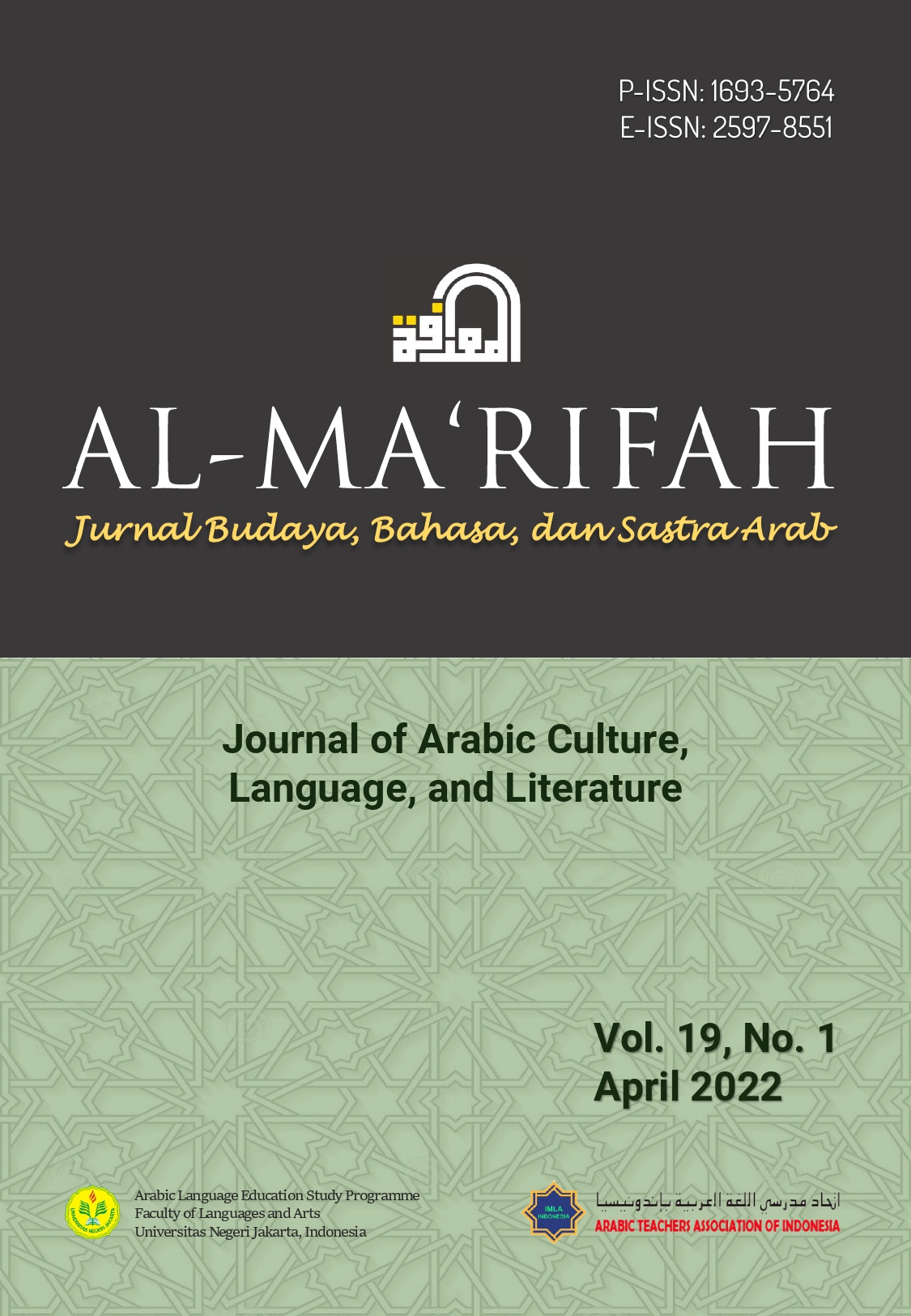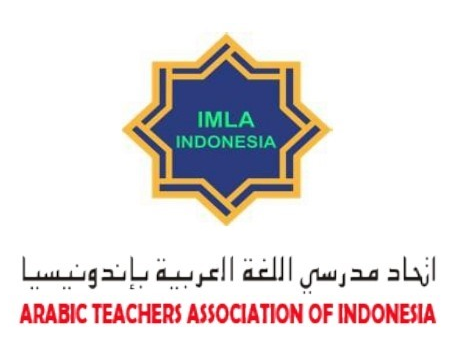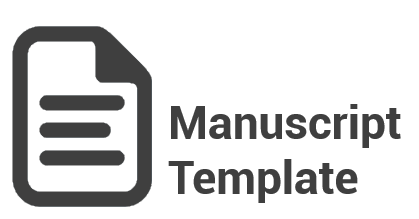Arabic-Indonesian Dictionary: Comparison of Digital Dictionary and Printed Dictionary
DOI:
https://doi.org/10.21009/almakrifah.19.01.04Keywords:
Arabic–Indonesia dictionary, digital dictionary, printed dictionary, lexicographyAbstract
The Arabic-Indonesian Digital Dictionary (KDAI, lit Kamus Digital Arab Indonesia) available in the play store and the Printed Arabic-Indonesian Dictionary (KCAI, lit Kamus Cetak Arab Indonesia) by Muhammad Yunus are two dictionaries that provide two languages with different publications. Digital and printed dictionaries and the comparison of the two dictionaries based on the ideal dictionary even though the number of enthusiasts is other. This study uses a descriptive qualitative approach with the method of literature. The digital dictionary is the most in-demand one, with 1,000,000 downloads. In contrast, the print dictionary by Muhammad Yunus is inversely proportional to the fact that few users know this printed dictionary. The results of this study are from the type of KDAI and KCAI; there are similarities in nuqṭat al-iṭlāq and ‘adad al-lughāt. In terms of meaning, KDAI includes a language dictionary, and KCAI consists of a translation dictionary. The lemma part of the second dictionary has a different number of lemmas, and also, in the explanation of each entry, there are differences. KDAI uses a collocation system, while KCAI uses a definition system. Based on compiling KDAI using software entry, KCAI uses arrangements based on pronunciation.
References
Al-Kasimi, A. M. (1977). Linguistics and bilingual dictionary. Leiden: E. J. Brill.
‘Aṭṭār, A. ‘A-G. (1979). Muqaddimah al-ṣiḥḥaḥ. Beirut: Dār al-‘Ilm li-al-Malāyīn.
Bergenholtz, H., & Tarp, S. (Eds.). (1995). Manual of specialised lexicography. Amsterdam: John Benjamins Publishing Company.
Fajri, S. N. (2011). Akurasi padanan istilah politik dan ekonomi Arab-Indonesia: Analisis banding semantik leksikal Kamus Al-‘Ashri dengan kamus Kontemporer Arab-Indonesia istilah politik-ekonomi. (Skripsi., Universitas Islam Negeri Syarif Hidayatullah, Jakarta).
Khalīl, Ḥ. (2012). Muqaddimah li-dirasat fiqh al-lughah. Iskandariyah: Dār al-Ma‘rifah al-Jāmi‘īyah.
Khoiriyah, H. (2020). Kualitas hasil terjemahan google translate dari bahasa Arab ke bahasa Indonesia. Al-Mi’yar, 3(1), 127–150. doi:10.35931/am.v3i1.205
Kridalaksana, H. (2009). Kamus linguistik (4 Ed.). Jakarta: Gramedia Pustaka Utama.
Maden, A. (2020). Comparison of student attitudes towards printed and digital dictionary use: A case of middle school. Journal of Language and Linguistic Studies, 16(2), 835–848. https://doi.org/10.17263/JLLS.759322
Miles, M. B., & Huberman, A. M. (1994). Qualitative data analysis: An expand sourcebook. Thousands Oaks , CA: Sage Publications.
Munawwir, A. W., Fairuz, M. (2007). Kamus Al Munawwir Indonesia Arab terlengkap. Surabaya: Pustaka Progresif.
Octaviano, A., & Sokma, A. A.. (2019). Perancangan aplikasi kamus digital berbahasa Indonesia – Sunda – Inggris berbasis android. Prosiding Seminar Nasional Informatika dan Sistem Informasi, 3(3), 148–155. Retrieved from http://openjournal.unpam.ac.id/index.php/SNISIS/article/download/3091/pdf
Project, R. (2019). Kamus Arab Indonesia Offline (Version 6.09.2) [Mobile app]. Google Play Store. https://play.google.com/store/apps/details?id=kamus.arab.indonesia&hl=en&gl=US
Purmawati A. (2007). Kamus Arab - Indonesia dan Indonesia-Arab berbasis web. (Skripsi., Universitas Sanata Dharma, Yogyakarta). Retrieved from https://repository.usd.ac.id/2184/
al-Qāsimī, ‘A. (1991). ‘Ilm al-lughah wa-ṣinā‘at al-mu‘jam. Riyad: ‘Imādat Shu’ūn al-Maktabāt Jāmi‘at al-Mālik Su‘ūd.
Ristek Muslim. (2021). Kamus Arab Indonesia (Version 6.09.2) [Mobile app]. Google Play Store. https://play.google.com/store/apps/details?id=com.ristekmuslim.kamusarabindo&hl=en&gl=US
Ristek Muslim. (2020). Kamus Arab Indonesia [Mobile app]. App Store. https://apps.apple.com/id/app/kamus-arab-indonesia/id1532022568?l=id
Sanusi, A., & Haq, F. Y. A. (2021). Pembelajaran bahasa Arab melalui penggunaan media Adobe Animate CC di sekolah. Al-Ma‘rifah: Jurnal Budaya, Bahasa, dan Sastra Arab, 18(1), 1–14. doi:10.21009/almakrifah.18.01.01
Setiadi, S. (2015). Peningkatan penguasaan kosakata bahasa Arab melalui metode penugasan model contoh, latihan, kerja mandiri (CLK). Al-Ma‘rifah: Jurnal Budaya, Bahasa, dan Sastra Arab, 12(2), 48–57. doi:10.21009/almakrifah.12.02.06
Sudaryanto. (2015). Metode dan aneka teknik analisis bahasa. Yogyakarta: Sanata Dharma University Press.
Sunarti, L., Ernawati., & Affan, M. (2017). Aplikasi kamus ViKA sebagai visualitator kosakata bahasa Arab untuk pembelajar pemula. Lisania: Journal of Arabic Education and Literature, 1(1), 37–55. doi:10.18326/lisania.v1i1.37-55
Taufiqurrohman. (2015). Leksikologi bahasa Arab. Malang: UIN Maliki Press.
Teguh, S. (2015). Leksikografi. Yogyakarta: Ombak.
Ukhrawiyah, F. (2019). Perubahan makna kosakata bahasa arab yang diserap ke dalam Bahasa Indonesia. Al-Ma‘rifah: Jurnal Budaya, Bahasa, dan Sastra Arab, 16(2), 132–139. doi:10.21009/almakrifah.16.02.03
‘Umar, A. M. (1998). Ṣinā‘at al-mu‘jam al-ḥadīth. Cairo: ‘Ālam al-Kutub.
Yunus, M. (2015). Kamus Indonesia Arab. Pustaka Gama.
Yunus, M. (2018). Kamus Arab Indonesia. Jakarta: Victoria Inti Cipta.
Zahrah, H., Wargadinata, W., & Barry, N. A. (2021). Analisis e-dictionary Arab-Indonesia yang tersedia di playstore dengan pendekatan leksikologi. Shaut Al-‘Arabiyah, 9(1), 1–10. doi:10.24252/saa.v9i1.21494
Downloads
Published
How to Cite
Issue
Section
License
Copyright (c) 2022 Asa Qubaila Sitta Zidna Rizqia, Aninda Nisa Maylana, Khabibi Muhammad Luthfi

This work is licensed under a Creative Commons Attribution 4.0 International License.











